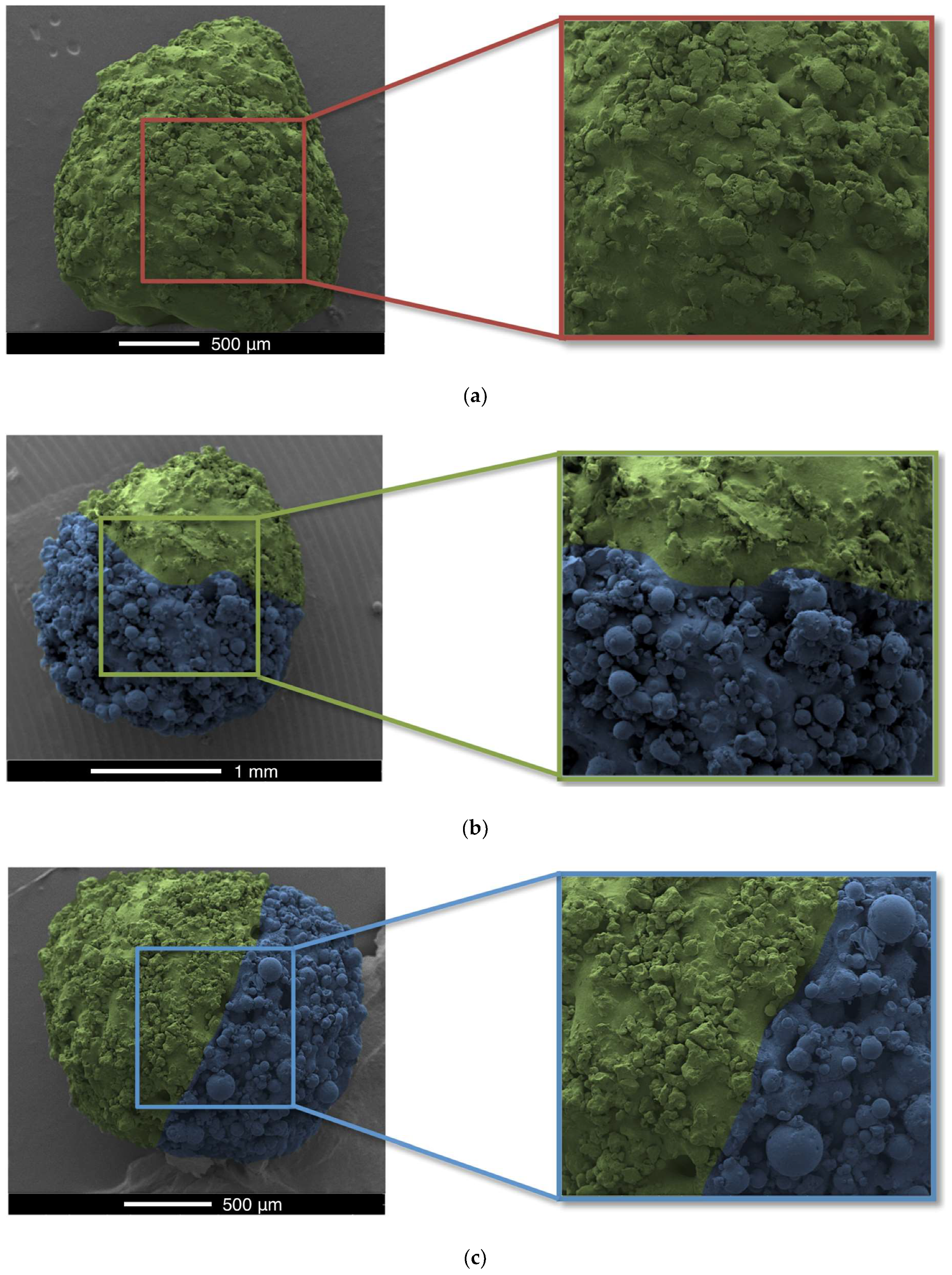In ‘3D Printed Pellets (Miniprintlets): A Novel, Multi-Drug, Controlled Release Platform Technology,’ international researchers explore better ways to deliver medications via SLS 3D printing in oral form.

Schematic representation of the compositions of (a) configuration A and (b) configuration B of the dual miniprintlets.
For this study, miniprintlets loaded with paracetamol were created in both 1mm and 2mm diameter sizes. Paracetamol USP grade (MW 151.16 g/mol, solubility in water at 37 °C: 21.80 g/L) and ibuprofen were used for testing purposes. Overall, 20–25 mg of miniprintlets were placed in different flasks of methanol:
“For the dual miniprintlets, single miniprintlets consisting of the individualized composition of each region were printed using the same parameters and were used for the drug content testing,” stated the researchers, who selected a laser scanning speed of 50 mm/s as they found it sufficient for layer bonding.
To print 100 miniprintlets at 1mm took less than two minutes. To print 2mm miniprintlets took less than 2 minutes and 40 seconds. The researchers also created dual miniprintlets with the same sample combination of medications, and in the 1mm and 2mm sizes. It took under two minutes and 30 seconds to print the 1mm batch, and under three minutes and 40 seconds to print the 2mm batch. All the miniprintlets proved to be uniform and sturdy; however, the drug release rate was lessened when the diameter was increased.
“As expected, the drug release rate from the miniprintlets was reduced when increasing the diameter. In a previous study, ethyl cellulose has shown very slow release, where only 20% paracetamol was released after 24 h from cylindrical printlets,” explained the researchers. “As such, this shows that the miniprintlets are more suited as a drug delivery platform for SLS printing using ethyl cellulose as the main polymer matrix. Indeed, this can be correlated to the increased surface area resulting from the reduction in diameter of the respective miniprintlets.”

Cross-sectional x-ray micro computed tomography (CT) images of (a) Con A and (b) Con B of the 2 mm dual miniprintlets. The yellow regions represent the Kollicoat Instant Release (KIR) regions, whereas the dark purple regions are the ethyl cellulose (EC) regions. The scale bar is representative of density.

Scanning electron microscopy (SEM) images of the 2 mm (a) single miniprintlet, and (b) Con A and (c) Con B of the dual miniprintlets. The yellow regions represent the EC regions, whereas the blue regions represent the KIR regions.
Dual miniprintlets offer enormous innovation for patient-specific treatments as each drug could offer a different ‘release profile’ within one miniprintlet. Release-form tablets could offer easier dosages and with a lower frequency of intake—while still offering the same effects.
“In contrast to previously proposed pathways for personalized medications, the use of the miniprintlet platform is much simpler and more efficient, as it does not require altering of the shape or dimensions of the dosage form, both of which could affect the drug release,” concluded the researchers. “The use of this novel approach could enhance the treatment regime, moving it away from a ‘one size fits all’ approach toward personalised medicines, which are safer and more effective.
“Fine-tuning of the therapeutic effect can be achieved by modulating parameters such as the dimensions and matrix composition, which in turn can be leveraged to produce multi-drug systems. To our knowledge, this study is the first to demonstrate the possibility of combining two rate-controlling systems in such small and intricate pharmaceutical dosage forms, enabling the individual programming of each drug. As such, this emphasizes the value of this technology, making it favorable over other commercial fabrication systems to produce pharmaceuticals.”
3D printed medications and other uses within the pharmaceutical field continue to sweep medicine, with innovative research projects such as accelerated drug release, better ways to personalize medications, and more. What do you think of this news? Let us know your thoughts! Join in the discussion of this and other 3D printing topics at 3DPrintBoard.com.
[Source / Images: ‘3D Printed Pellets (Miniprintlets): A Novel, Multi-Drug, Controlled Release Platform Technology’]
Subscribe to Our Email Newsletter
Stay up-to-date on all the latest news from the 3D printing industry and receive information and offers from third party vendors.
You May Also Like
Profiling a Construction 3D Printing Pioneer: US Army Corps of Engineers’ Megan Kreiger
The world of construction 3D printing is still so new that the true experts can probably be counted on two hands. Among them is Megan Kreiger, Portfolio Manager of Additive...
US Army Corps of Engineers Taps Lincoln Electric & Eaton for Largest 3D Printed US Civil Works Part
The Soo Locks sit on the US-Canadian border, enabling maritime travel between Lake Superior and Lake Huron, from which ships can reach the rest of the Great Lakes. Crafts carrying...
Construction 3D Printing CEO Reflects on Being Female in Construction
Natalie Wadley, CEO of ChangeMaker3D, could hear the words of her daughter sitting next to her resounding in her head. “Mum, MUM, you’ve won!” Wadley had just won the prestigious...
1Print to Commercialize 3D Printed Coastal Resilience Solutions
1Print, a company that specializes in deploying additive construction (AC) for infrastructure projects, has entered an agreement with the University of Miami (UM) to accelerate commercialization of the SEAHIVE shoreline...





























